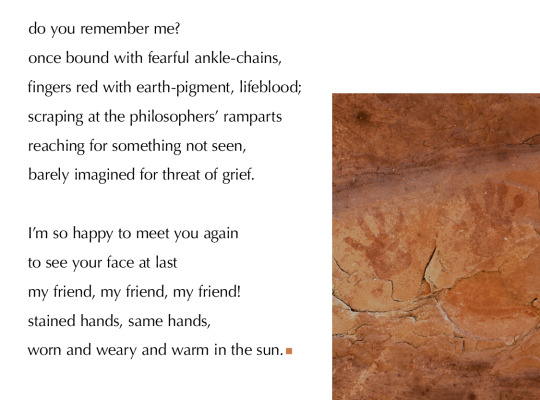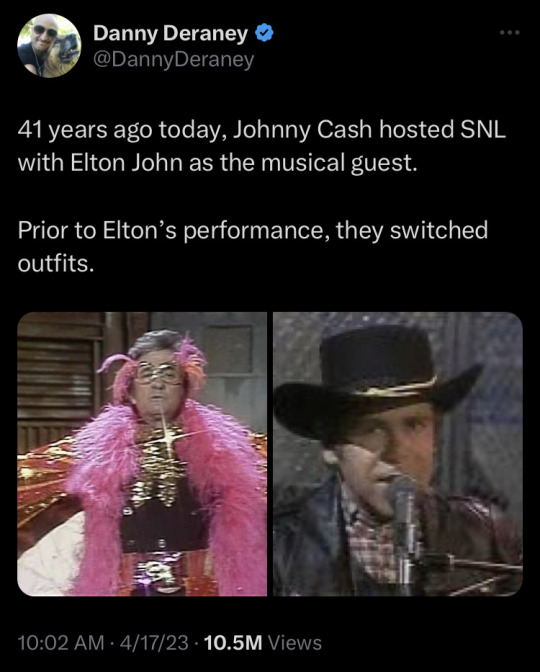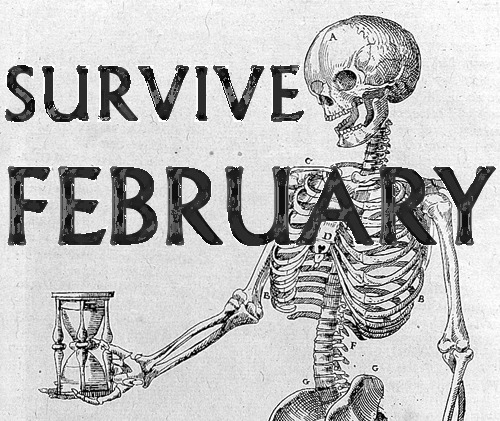A cesspool of interestsCommissions and DMs are open! Warping the Veil Master Post || Dragon Age Resources
Don't wanna be here? Send us removal request.
Text
Tips on Writing Breakup Scenes
✦ People don’t always cry. shocking, I know. sometimes someone just sits there like a polite zombie, nodding and saying “okay” while their soul quietly packs a bag and moves out the back of their skull. They might want to cry, but also they might just go numb and stare at the salt shaker for ten minutes. Both are valid guys.
✦ Most breakups aren’t a single moment, they’re a slow unraveling that ends in a conversation, so even if your character feels blindsided, it should still carry that surreal “I should’ve seen this coming” haze. Because breakups rarely just drop out of the sky.
✦ The dumbest details stick, like seriously, no one remembers the whole speech, but they’ll remember the scratchy napkin, the weird buzz of a light, that their ex had mustard on their cheek and didn’t notice.
✦ You can always feel a breakup coming. no one says “we need to talk” out of nowhere, because people act different right before. overly nice. extra distant. weirdly cold or weirdly warm. characters should notice that, even if they can’t quite name what it is yet.
✦ Sometimes people still love each other. like, actually still love each other. it’s not always about the love being gone, no. It can be timing, fear, baggage, a hundred other things that get in the way. let your characters say “I love you” and still not stay. It hurts and it’s real.
✦ Closure? lol. most people don’t get it. a lot of breakups end with “wait, that’s it?” or a message that never gets sent or that one thing you almost said but didn’t. There’s rarely a satisfying ending.
✦ No one speaks in perfect sentences mid-breakup. people ramble. they say sorry three times and mean something different every time. Someone’s trying to keep it light. someone else is cracking. sentences trail off. someone forgets how to use words entirely.
✦ After it’s over, people don’t always sob into a pint of ice cream. Some people shut down, some go out and party, some clean their entire room, rewatch a comfort show, or post a spicy selfie with “new era” energy. Everyone breaks differently, so let your characters be weird about it.
✦ And if your character is the one doing the breaking up, let them feel complicated... just because they’re ending it doesn’t mean it’s easy. They might feel guilty and relieved, or they might cry after. Maybe they might mourn the version of the relationship that only existed in their head.
882 notes
·
View notes
Text
5 Tiny Writing Tips That Aren’t Talked About Enough (but work for me)
These are some lowkey underrated tips I’ve seen floating around writing communities — the kind that don’t get flashy attention but seriously changed how I write.
1. Put “he/she/they” at the start of the sentence less often.
Try switching up your sentence rhythm. Instead of
“She walked to the window,”
try
“The window creaked open under her touch.”
Keeps it fresh and stops the paragraph from sounding like a checklist.
2. Don’t describe everything — describe what matters.
Instead of listing every detail in a room, pick 2–3 objects that say something.
“A half-drunk mug of tea and a knife on the table”
sets a way stronger tone than
“There was a wooden table, two chairs, and a shelf.”
3. Use beats instead of dialogue tags sometimes.
Instead of:
"I'm fine," she said.
Try:
"I'm fine." She wiped her hands on her skirt.
It helps shows emotion, and movement.
4. Write your first draft like no one will ever read it.
No pressure. No perfection. Just vibes. The point of draft one is to exist. Let it be messy and weird — future you will thank you for at least something to edit.
5. When stuck, ask: “What’s the most fun thing that could happen next?”
Not logical. Not realistic. FUN. It doesn’t have to stay — but chasing excitement can blast through writer’s block and give you ideas you actually want to write.
What’s a tip that unexpectedly helped with your writing? Let me know!! 🍒
1K notes
·
View notes
Text
🧪 Character Arcs 101: what they are, what they aren’t, and how to make them hurt
by rin t. (resident chaos scribe of thewriteadviceforwriters)
Okay so here’s the thing. You can give me all the pretty pinterest moodboards and soft trauma playlists in the world, but if your character doesn’t change, I will send them back to the factory.
Let’s talk about character arcs. Not vibes. Not tragic backstory flavoring. Actual. Arcs. (It hurts but we’ll get through it together.)
─────── ✦ ───────
💡 what a character arc IS:
a transformational journey (keyword: transformation)
the internal response to external pressure (aka plot consequences)
a shift in worldview, behavior, belief, self-concept
the emotional architecture of your story
the reason we care
💥 what a character arc is NOT:
a sad monologue halfway through act 2
a single cool scene where they yell or cry
a moral they magically learn by the end
a “development” label slapped on a flatline
─────── ✦ ───────
✨ THE 3 BASIC FLAVORS OF ARC (and how to emotionally damage your characters accordingly):
Positive Arc They start with a flaw, false belief, or fear that limits them. Through the events of the story (and many Ls), they confront that internal lie, grow, and emerge changed. Hurt factor: Drag them through the mud. Make them fight to believe in themselves. Break their trust, make them doubt. Let them earn their ending.
Negative Arc They begin whole(ish) and devolve. They fail to overcome their flaw or false belief. This arc ends in ruin, corruption, or defeat. Hurt factor: Let them almost have a chance. Build hope. Then show how they sabotage it, or how the world takes it anyway. Twist the knife.
Flat/Static Arc They don’t change, but the world around them does. They hold onto a core truth, and it’s their constancy that drives change in others. Think: mentor, revolutionary, or truth-teller type. Hurt factor: Make the world push back. Make their values cost them something. The tension comes from holding steady in chaos.
─────── ✦ ───────
🎯 how to build an arc that actually HITS (no ✨soft lessons✨, just internal structure):
Lie they believe: What false thing do they think about themselves or the world? (“I’m unlovable.” “Power = safety.” “I’m only valuable if I’m useful.”)
Want vs. need: What do they think they want? What do they actually need to grow?
Wound/backstory scar: What made them like this? You don’t need a tragic past™ but you do need cause and effect.
Turning point: What moment forces them to question their worldview? What event cracks the surface?
Moment of choice: Do they change? Or not? What decision seals their arc?
🧪 Pro tip: this is not a worksheet. This is scaffolding. The arc lives in the story, not just your doc notes. The lie isn’t revealed in a monologue, it’s felt through consequences, relationships, mistakes.
─────── ✦ ───────
🛠️ things to actually do with this:
Write scenes where the character’s flaw messes things up. Like, they lose something. A person. A plan. Their cool. Make the flaw hurt.
Track their beliefs like a timeline. How do they start? What chips away at it? When does the shift stick?
Use relationships as arc mirrors. Who challenges them? Enables them? Forces reflection? Internal change is almost never solo.
Revisit the lie. Circle back to it at least three times in escalating intensity. Reminder > confrontation > transformation.
─────── ✦ ───────
🌊 bonus pain level: REVERSE THE ARC
Wanna make it really hurt? Set them up for one arc, and give them the opposite. They think they’re growing into a better person. But actually, they’re losing themselves. They think they’re spiraling. But they’re really healing. Let them be surprised. Let the reader be surprised.
─────── ✦ ───────
TL;DR: If your plot is a skeleton, your character arc is the nervous system.
The change is the thing. Don’t just dress it up in trauma. Don’t let your character learn nothing. Make them face themselves. And yeah. Make it hurt a little. (Or a lot. I won’t stop you.)
—rin t. // thewriteadviceforwriters // plotting pain professionally since forever
P.S. I made a free mini eBook about the 5 biggest mistakes writers make in the first 10 pages 👀 you can grab it here for FREE:
2K notes
·
View notes
Text
Zoom In, Don’t Glaze Over: How to Describe Appearance Without Losing the Plot
You’ve met her before. The girl with “flowing ebony hair,” “emerald eyes,” and “lips like rose petals.” Or him, with “chiseled jawlines,” “stormy gray eyes,” and “shoulders like a Greek statue.”
We don’t know them.
We’ve just met their tropes.
Describing physical appearance is one of the trickiest — and most overdone — parts of character writing. It’s tempting to reach for shorthand: hair color, eye color, maybe a quick body scan. But if we want a reader to see someone — to feel the charge in the air when they enter a room — we need to stop writing mannequins and start writing people.
So let’s get granular. Here’s how to write physical appearance in a way that’s textured, meaningful, and deeply character-driven.
1. Hair: It’s About Story, Texture, and Care
Hair says a lot — not just about genetics, but about choices. Does your character tame it? Let it run wild? Is it dyed, greying, braided, buzzed, or piled on top of her head in a hurry?
Good hair description considers:
Texture (fine, coiled, wiry, limp, soft)
Context (windblown, sweat-damp, scorched by bleach)
Emotion (does she twist it when nervous? Is he ashamed of losing it?)
Flat: “Her long brown hair framed her face.”
Better: “Her ponytail was too tight, the kind that whispered of control issues and caffeine-fueled 4 a.m. library shifts.”
You don’t need to romanticise it. You need to make it feel real.
2. Eyes: Less Color, More Connection
We get it: her eyes are violet. Cool. But that doesn’t tell us much.
Instead of focusing solely on eye color, think about:
What the eyes do (do they dart, linger, harden?)
What others feel under them (seen, judged, safe?)
The surrounding features (dark circles, crow’s feet, smudged mascara)
Flat: “His piercing blue eyes locked on hers.”
Better: “His gaze was the kind that looked through you — like it had already weighed your worth and moved on.”
You’re not describing a passport photo. You’re describing what it feels like to be seen by them.
3. Facial Features: Use Contrast and Texture
Faces are not symmetrical ovals with random features. They’re full of tension, softness, age, emotion, and life.
Things to look for:
Asymmetry and character (a crooked nose, a scar)
Expression patterns (smiling without the eyes, habitual frowns)
Evidence of lifestyle (laugh lines, sun spots, stress acne)
Flat: “She had a delicate face.”
Better: “There was something unfinished about her face — as if her cheekbones hadn’t quite agreed on where to settle, and her mouth always seemed on the verge of disagreement.”
Let the face be a map of experience.
4. Bodies: Movement > Measurement
Forget dress sizes and six packs. Think about how bodies occupy space. How do they move? What are they hiding or showing? How do they wear their clothes — or how do the clothes wear them?
Ask:
What do others notice first? (a presence, a posture, a sound?)
How does their body express emotion? (do they go rigid, fold inwards, puff up?)
Flat: “He was tall and muscular.”
Better: “He had the kind of height that made ceilings nervous — but he moved like he was trying not to take up too much space.”
Describing someone’s body isn’t about cataloguing. It’s about showing how they exist in the world.
5. Let Emotion Tint the Lens
Who’s doing the describing? A lover? An enemy? A tired narrator? The emotional lens will shape what’s noticed and how it’s described.
In love: The chipped tooth becomes charming.
In rivalry: The smirk becomes smug.
In mourning: The face becomes blurred with memory.
Same person. Different lens. Different description.
6. Specificity is Your Superpower
Generic description = generic character. One well-chosen detail creates intimacy. Let us feel the scratch of their scarf, the clink of her earrings, the smudge of ink on their fingertips.
Examples:
“He had a habit of adjusting his collar when he lied — always clockwise, always twice.”
“Her nail polish was always chipped, but never accidentally.”
Make the reader feel like they’re the only one close enough to notice.
Describing appearance isn’t just about what your character looks like. It’s about what their appearance says — about how they move through the world, how others see them, and how they see themselves.
Zoom in on the details that matter. Skip the clichés. Let each description carry weight, story, and emotion. Because you’re not building paper dolls. You’re building people.
8K notes
·
View notes
Text


plato's allegory of the brave
this isn't about any one person in particular but also it's about all of my friends. yes you. love you. inspired of course by this post.
(photo by brad weaver on unsplash!)
55 notes
·
View notes
Text
It is mentioned in later books. I think it's in sotr. They get demolished and memorials built in their place I think.
Recently got into hunger games (had only ever watched the movies, just started reading the books with the new release) and like idk if they mention it in the later books and I’m not there yet but I know capital citizens used to vacation in the old arenas so like after the rebellion I just have to wonder what they did with the old arenas? Like destroy them? History museums to learn from the past? Idk let me know your theories I’m curious
#hunger games#catching fire#the hunger games#mockingjay#the ballad of songbirds and snakes#sunrise on the reaping#sotr#sotr spoilers
29 notes
·
View notes
Text
34K notes
·
View notes
Text
genuinely wild to me when I go to someone's house and we watch TV or listen to music or something and there are ads. I haven't seen an ad in my home since 2005. what do you mean you haven't set up multiple layers of digital infrastructure to banish corporate messaging to oblivion before it manifests? listen, this is important. this is the 21st century version of carving sigils on the wall to deny entry to demons or wearing bells to ward off the Unseelie. come on give me your router admin password and I'll show you how to cast a protective spell of Get Thee Tae Fuck, Capital
67K notes
·
View notes
Text
@corkinavoid


Comic Commission for @frootysparkycakes
Someone with the ability to see when people die meets someone who already died a long time ago.
7K notes
·
View notes
Text

just wanted to share the National Down Syndrome Society’s message for this year’s World Down Syndrome Day (21st March) 💛💙
82K notes
·
View notes
Text
No Amazon. No Walmart. No Target. No Disney. No Google. No Apple. No Visa or Mastercard. And especially no Facebook. I will not be posting on Meta platforms for the next 24 hours in support of the economic blackout.
21K notes
·
View notes
Text
USA people! Buy NOTHING Feb 28 2025. Not anything. 24 hours. No spending. Buy the day before or after but nothing. NOTHING. February 28 2025. Not gas. Not milk. Not something on a gaming app. Not a penny spent. (Only option in a crisis is local small mom and pop. Nothing. Else.) Promise me. Commit. 1 day. 1 day to scare the shit out of them that they don't get to follow the bullshit executive orders. They don't get to be cowards. If they do, it costs. It costs.
Then, if you can join me for Phase 2. March 7 2025 thtough March 14 2025? No Amazon. None. 1 week. No orders. Not a single item. Not one ebook. Nothing. 1 week. Just 1.
If you live outside the USA boycott US products on February 28 2025 and stand in solidarity with us and also join us for the week of no Amazon.
Are you with me?
Spread the word.
197K notes
·
View notes
Text
Just reminder:
Fuck ICE
Death to Trump and his billionaire buddies
Always punch Nazis
19K notes
·
View notes
Text

It’s somehow more jarring to see Elton in black than Johnny in pink.
60K notes
·
View notes
Text



Don’t bet against rook
#dragon age#datv#dragon age the veilguard#dragon age veilguard#dav#veilguard#dragon age rook#rook ingellvar#Persephone ingellvar#lucanis dellamorte#dragon age davrin#Neve gallus#dragon age Taash
5K notes
·
View notes
